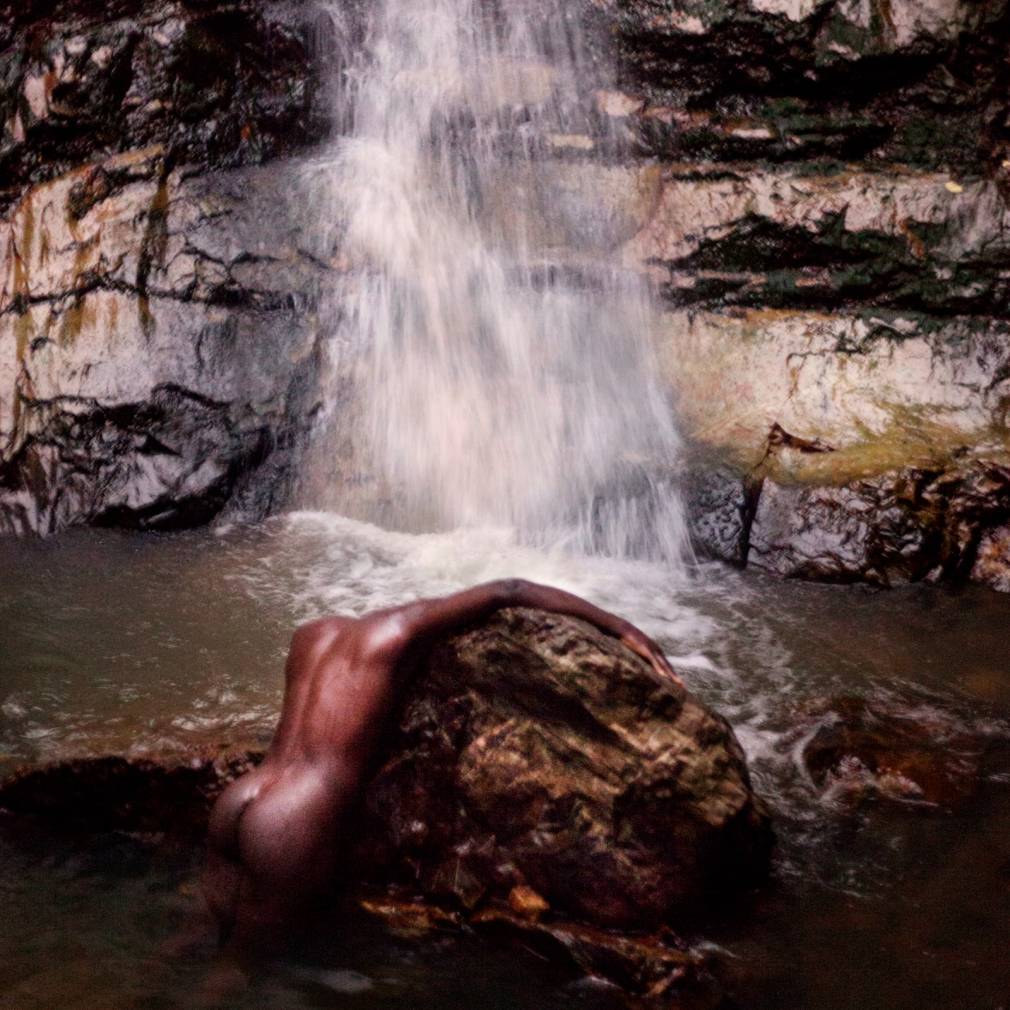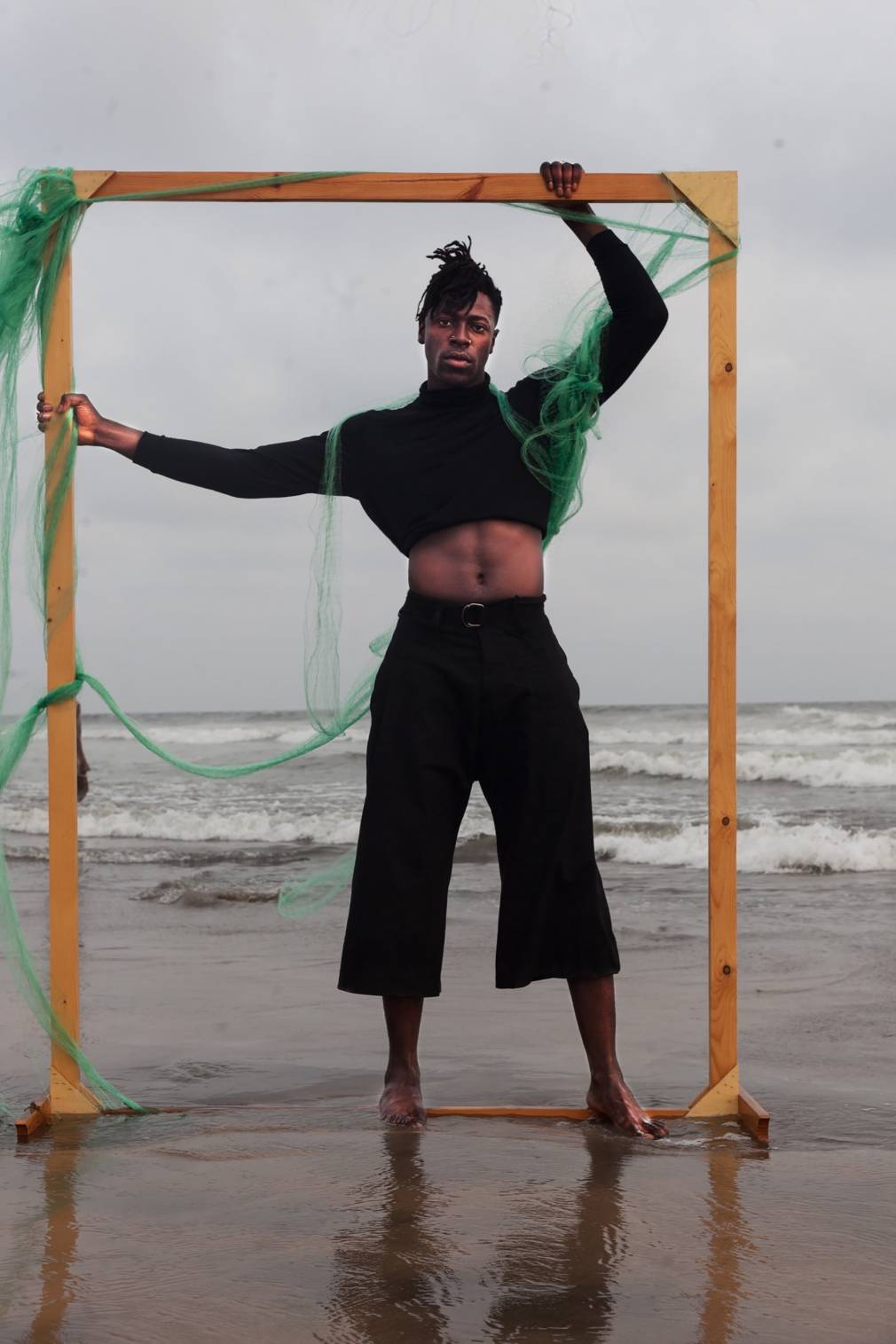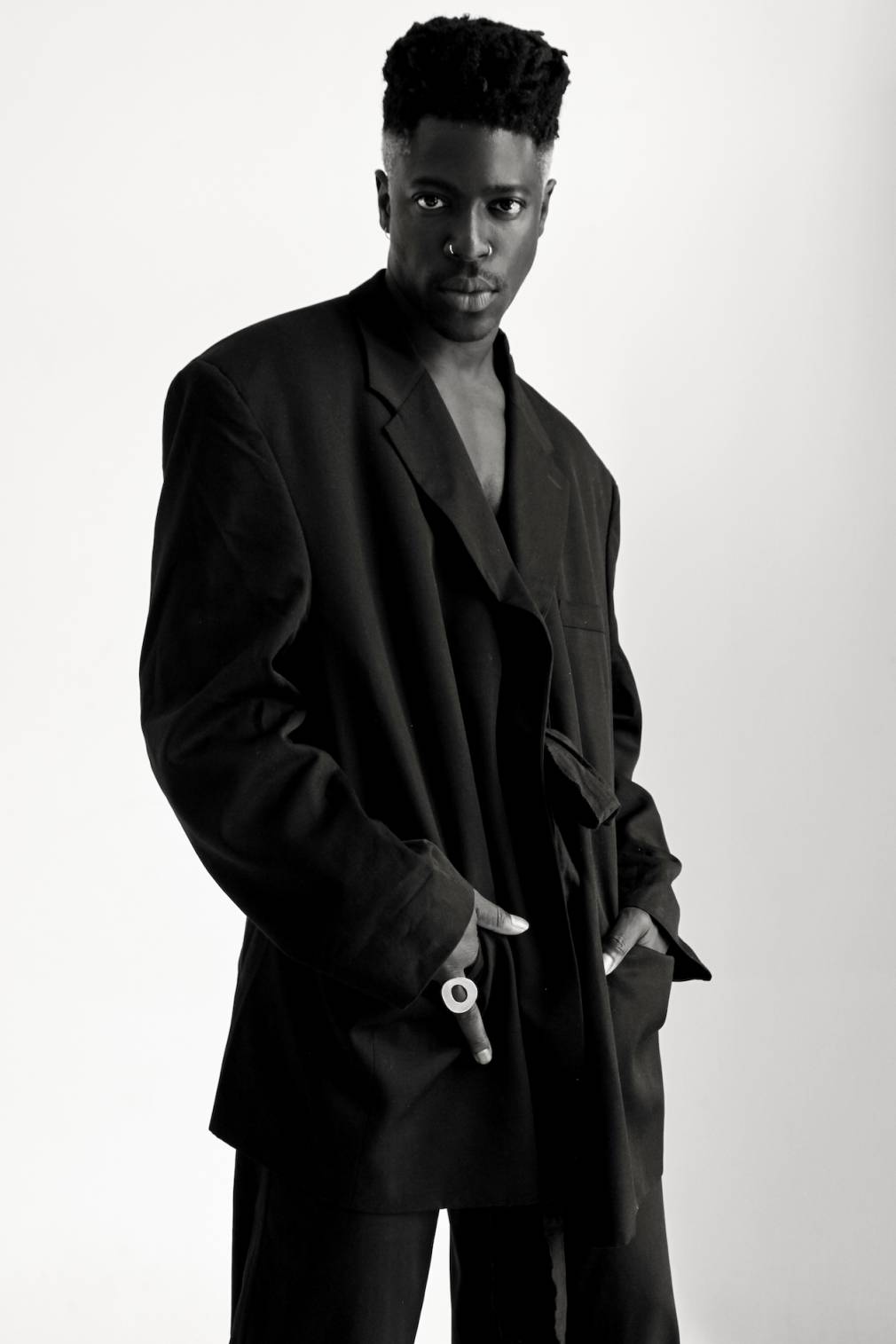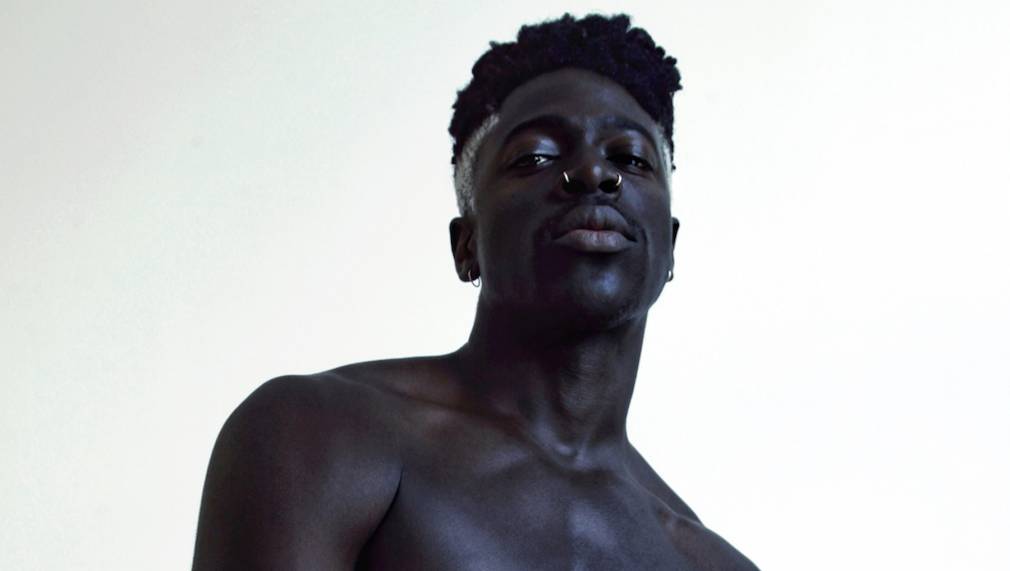‘Performer | Poor Person | laughing & crying’. This is Moses Sumney’s bio on Twitter, a space where he regularly posts his poetical and political musings, as well as images with sublime yet quite disturbing aesthetics. From the cover of his album to his avatar on social networks, the identity of the singer, author, and composer is way more profound and complex than first impressions might suggest; even the way he describes himself on Twitter sounds strangely like a pre-mortem epitaph.
A revolt against labels
Sumney’s got a real problem with labels. On his latest album he struggles against all the ways that others want to pin him down, including the label of ‘R’n’B singer’. That marker hardly covers it when you consider that he’s often been found on stage at jazz and folk festivals, and with the great pop masses like at Bonaroo and Coachella, or that he has bathed in the soul of Aretha Franklin and collaborated with the songwriter Sufjan Stevens! To blur the lines even further, Sumney moved to Asheville, North Carolina, the home of the Moog keyboards mastered by Bernie Worell. Sumney invited some of these electronic tinkerers onto his track “Conveyor”, where he tried out a new 16-track Moog vocoder. To add to all that, Asheville is also the land of Yankee Appalachian folk and country music…

So that the listener can have time to think about the album’s twenty deep and complex tracks, Sumney released græ in two parts: the first part – with twelve tracks – was released last winter on digital and streaming platforms, along with the very soulful music video for “Cut Me”. The album in its entirety was released on 15th May as a magnificent double disc edition. It’s been good to have several months to absorb its uniqueness.
Musically speaking, græ is an incredible mixture, so we’ll try not to reduce it to one universe, seeing as Sumney’s galaxy is so vast. With no fixed genre, he mixes spoken work, song, flirts with very high falsetto and lower tessitura, deals with distorted pop, intelligent indie rock, dance floor beats, and new universes of sound. In the track “Neither/Nor” he links the cradle of American folk and country music – North Carolina – to the ancestral land of the banjo: Africa.
The kora meets a dancing beat and we melt into a dream world. With whichever genre he flirts, his masterful, inimitable voice is the cornerstone of each track, including those Afro-futuristic meteorites criss-crossing jazzy galaxies (“Colouour”, in a low-key collaboration with saxophonist Shabaka Hutchings). And when Moses Sumney invites guests, such as bassist Thundercat, it’s to give them the opportunity to be heard in completely new ways – even if that does mean distorting singer Jill Scott’s soul voice until it’s almost unrecognisable.
‘I truly believe that people who define you control you’ says Ayesha K. Faines in a spoken word interlude on “Boxes”, a beautiful track on græ.
Our Moses of the Appalachians has thus managed to escape clichés and the black and white binarism so prevalent these days. He takes us on a journey across the deserts and seas of foolish certainty in order to travel to the in betweens, where genres, rhythms, and even rhythms can no longer be boxed in.
Sumney asks that ideas about gender, virility, and race be deconstructed, or at least be rethought outside of existing frameworks and rebuilt with different tools, as suggested by the poet Audre Lorde – someone whom Sumney reads a lot. To shake up his listener, Moses chooses his words with intelligence and radicalism (even offering work for free on his website), although they sometimes have to be sugar coated to make them easier to swallow, as in the self-directed music video for “Cut Me”. There we see him crossing a desert in an ambulance, wearing an oxygen mask, then running off to a ghostly hospital (this was long before the Covid-19 crisis!).
This track starts with a soulful bass line, fading into Motown-style horns. It appears to be a nod to the pains of life and love sung under the auspices of gospel or soul, but the title is actually about masochism and the pleasure one can have in hurting oneself. Like any successful hit, the themes of Moses Sumney’s songs are always more complex and troubled than one might imagine at first glance. On græ he says he wants to “octopus myself” as a way to describe the many tentacles he’s let himself grow (cinema, production, poetry, songs, but above all reflecting on identity and politics). ‘I’ve reached a point where I’m aware of my inherent multiplicity / and anyone wishing to meaningfully engage with me or my work must be too’ warns one of the album’s interludes.

An island between worlds
For Sumney, this ‘multiplicity’ isn’t just artistic license, but his true nature. Sometimes wild and untamable, it keeps him away from the posturing often required in American pop and its ideas of glittering success. Knowing who you are allows you to navigate loneliness and external pressures, even if it means saying no to the system and choosing independence (which is exactly what Sumney did when he signed with the indie label Jagjaguwar).
The album starts with “Insula”, a reflection on meditation, insularity, and isolation. A premonition perhaps, seeing as this record has been released in the middle of a global lockdown? In fact this song sounds like an echo of the somewhat isolated life that he decided to build for himself in North Carolina – a serious choice for Sumney who was born in the United States to undocumented Ghanaian parents, spending his youth in the land of Nkrumah before returning to the United States. He was caught up in the back and forth, neither really American in the U.S., nor Ghanaian in Africa. Sumney studied art in L.A., but never really found his place there either. He was always in-between and broke. So this record refers to that isolation, one more emotional than physical, that Sumney has had time to think about and reflect on over the years.
In a tribute to Yuri Gagarin, the first man in space, Sumney sings ‘the earth rotates on its axis and I gravitate in echokinesis’ (echokinesis is the ‘spontaneous involuntary tendency to repeat or imitate the movements of another individual’, Ed.). In this record he tries to find his own centre of gravity by avoiding the trap of labels and ready-made identities. And not only does he succeed in doing so, he takes us into this new universe that links our Old Town Road and the roots of old America to galaxies of the future – a space for experimentation where we must constantly rethink freedom and isolation, and the relationship we have with the self and with others. In this journey there are friends, interludes, hits, stellar poems, ups and downs, experiments, strange reflections, returns to the past, and perhaps even a glimmer of hope shining through these 50 shades of græ…
1) “I’ve reached a point where I’m aware of my inherent multiplicity / and anywone wishing to meaningfully engage with me or my work must be too.”



